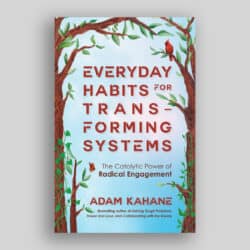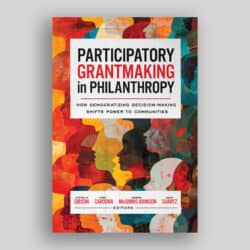Robert W Crawford, Author and Compiler, Published by the Foundation for the Extension and Development of the American, Professional Theatre (FEDAPT), New York, 1985, pp.72
No Quick Fix (Planning), Frederick B. Vogel, Editor, Published by FEDAPT, New York, 1985, pp.96, $9.95 (U.S.)
How many directors of charitable organizations do not know what they are doing on the board? How many are not told what they are expected to do, either before they are appointed or afterwards? How many charitable organizations themselves do not know (whether that “knowledge”should rest in the existing board or the management) just what the board is for?
If the answer to these questions were “only one”, it would be too many, but the most cursory observation suggests that the number is far larger. A distressing number of charities fill their boards with people who are available, or who are willing, or who are thought to have money or moneyed friends, or who are themselves friends of the recruiters. While none of these criteria should disqualify a director, none is sufficient to justify his or her selection. Moreover, none of these criteria offers any guideline as to what the new director is supposed to contribute (except money).
Those who are associated with inexperienced charitable organizations who are encountering either of these problems can profit from In Art We Trust: The Board ofTrustees in the Peiforming Arts. Robert Crawford, now a consultant after years of practical work in the field, has written a detailed guide to the functions and structure of a board of directors. He has laced his narrative with short pieces on special related topics by a number of senior directors or consultants. While the book is aimed at the boards of arts organizations, a great deal of the content would apply to any non-profit organization with a volunteer board. Those fortunate enough not to share these problems can still benefit from reading a good study of boards every year or so, perhaps as preventive maintenance. In Art We Trust can serve as this year’s refresher course.
The book has five parts of unequal length. The first outlines the reason for having a board of directors and the means of selecting it. The next two review the functions and the structure of a working board (the only useful kind, according to Crawford.) The fourth focuses on retreats, which allow directors to concentrate on the mission or the future of the organization. The fifth provides model by-laws for an arts organization.
The theme of the first part is that the board does not own the organization, although it is legally responsible for it. Rather, the artistic director, the management and the board are all partners in making the organization work. The role of each may depend on the mission of the organization, which in turn varies to some extent if the organization was founded by an artistic leader, an administrator or a group of interested citizens who form the first board and then hire the others.
As in any partnership, all partners must pull their weight. Crawford expects any director to serve as an advocate for the organization publicly and privately, attend performances, attend board meetings, serve on board committees and both give and get money. These expectations require that potential directors be informed about what they are getting into. Any new director should understand both why he or she is asked to serve and why he or she has agreed to do so. The author doubts the value of directors chosen only for their names or for their money. Although a name may give credibility to a small organization, most operations would get greater help from someone prepared to work. “Needs before names,” says Crawford. Likewise, someone with moneyed connections may be able to tap them for the benefit of the organization, but only if he or she is willing to work at it. There are ways to honour major patrons without using up directorships.
Although the board does not own the arts organization, Crawford does not advocate democracy either. He opposes an open membership, or the sale of voting memberships to raise funds. He says this leaves the board susceptible to takeover by a determined minority which could organize to pack a meeting and elect its own directors.
He would hope to reduce this risk by banning voting by proxy so members could not solicit support from those unwilling to attend meetings. Ideally, he says, the board elects and perpetuates itself. Through honest dedication and a conscientious nominating committee, and compulsory retirement after a certain number of years’ service, the organization can avoid staleness and ensure renewal.
This position strikes me as undesirable. Not only does Crawford overstate the risk of insurrection (a risk easily minimized by partial rotation of the board), managment ple the directors should be accountable to someone for their management. In
Canada, there is little close public scrutiny of the operation of charities and the opportunity to control abuses of trust is scant. Directors should not be encouraged to isolate themselves from their communities, however defined. The qualifications of members may vary, but those who donate have at least shown some interest. The board of the Stratford Festival no doubt learned something from having to face the members during the crisis arising from the departure of Robin Phillips. Many hospital boards have become fighting grounds for supporters and foes of therapeutic abortion committees. “Oneissue directors” are unlikely to give useful board service to all programs, but the community being served may reasonably expect to have some voice in determining who is responsible for providing the service.
In Art We Trust outlines the functions of committees of the board, suggesting which are most useful. Committees can provide a focus for the efforts of volunteers and a training ground for future directors. They will often serve as the main working link between the board and the employed staff of the organization, preparing the way for efficient decision-making by the full board. Crawford draws a clear line between the board’s responsibility for financial matters and fund raising, on the one hand, and the necessary freedom of the artistic director to make artistic decisions, on the other. Even if the board cuts a proposed budget, the artistic director must decide how best to allocate the artistic activities so as to live within it.
The directors should, however, have a chance to discuss the artistic plans of the company with the artistic staff (or, in other types of organizations, those who perform the active work of the charity). That is the “fun” part, as Crawford calls it. The board members do the work because of an interest in, not to say devotion to, the mission of the organization. They want to feel involved, to know what is and will be happening, and why. Every meeting of the board should devote some time to “fun” in this sense, he says. This does not mean that the directors usurp the functions of the artistic director but it does mean that they do more than listen to a one-way report from management. The discussion can renew the dedication of the directors to the organization and stimulate better work.
That work includes both the short term and the long term. Beyond responding to today’s crises—and even to ensure better responses to them—the board needs to plan. Vogel’s book No Quick Fix (Planning) intends to demystify and facilitate that process. Demystify, because a lot of people think there is something arcane and highly technical about planning. Facilitate, because only those who know where they are going can work effectively to get there. Perhaps the most important point, one made more than once in Vogel’s book, is that planning does not tie you down or create undesirable rigidities. On the contrary, planning liberates the organization by focusing all its attention and energy on achieving success and defining what success is. Plans can, and must, change with time but a sense of direction can help decide how the change occurs.
Robert Crawford shows up again in this book with good advice. Arts (and presumably most other charitable) organizations, do not start to plan to get to a certain organizational point. They should start with the artistic dreams that led to the creation of the organization in the first place. When they learn to “dream programatically”, creativity is focused, not limited. As another contributer says of financial planning, by planning one is interpreting the dream in numbers rather than in words. The dream does not become invalid because one knows some of the steps to take to realize it.
Both Crawford’s own book and Vogel’s, advocate board “retreats” which should sometimes include staff. Retreats allow concentrated and uninterrupted attention to broader problems such as defining the dream or mission of the organization or setting up a long-range plan-three-to-five years-to achieve it. Crawford recommends retreats with one overnight stay, for continuity and a sense of occasion. A neutral experienced facilitator or moderator can help to produce useful results efficiently. While retreats are time-consuming and often exhausting, well-run retreats can also restore the enthusiasm of the board and the staff and create an atmosphere of hope and co-operation that convinces all who attend that the organization is well worth working for.
One of Crawford’s authors says the time spent getting the right board can be arduous, but it should be considered one of the most important tasks in organizing any non-profit organization. Selection is difficult and smooth operation when the board is finally in place is harder. However, neither process is magic. Guidelines exist to help the novice and reassure the experienced. These two FEDAPT texts offer practical and detailed advice both for directors and for those who are looking for them.
REVIEWED BY JOHN GREGORY
Member, The Ontario Bar


